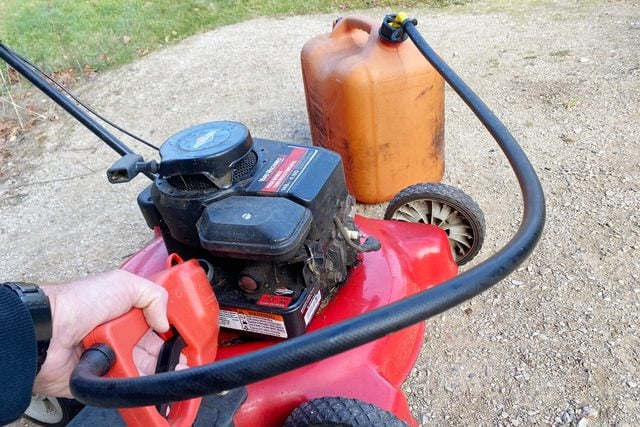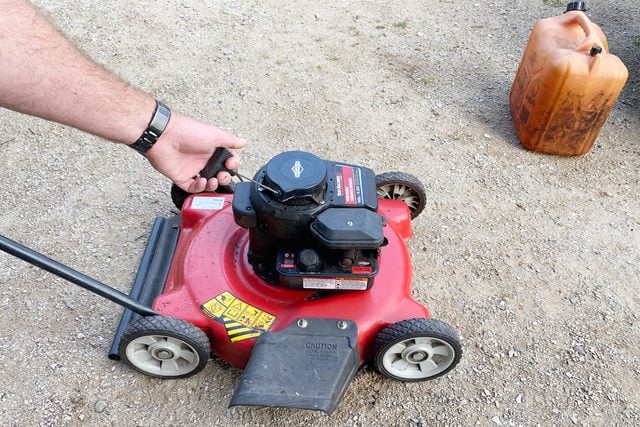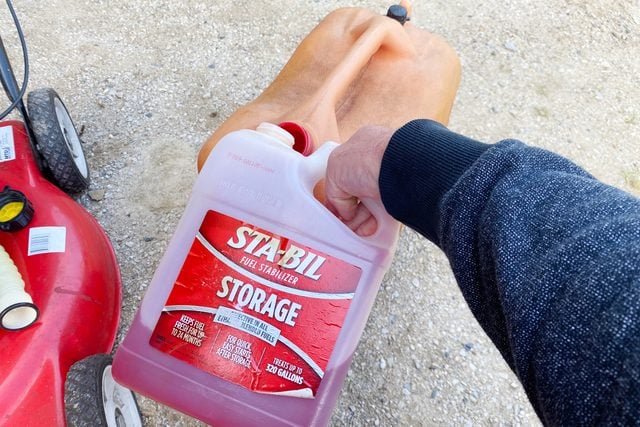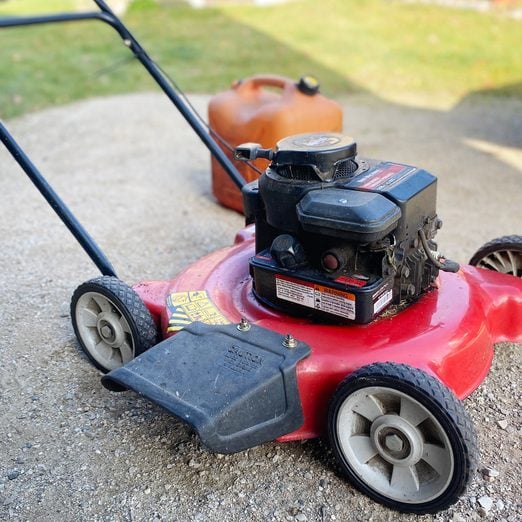How To Drain Gas From a Lawn Mower
Updated: Apr. 25, 2024
If you want to steer clear of spring start up issues, this is one bit of gas mower maintenance you don't want to miss.
Less than 30 minutes
Beginner
$20-50
Introduction
I love a gas-powered mower for effortlessly cutting a large lawn. But I'm mindful of the meticulous maintenance needed to keep them running smoothly. Being lax with lawn mower winterization can cause engine troubles when it's time to trim your spring turf. Learning when and how to drain gas from a lawn mower helps prevent frustrating starter issues.
I spoke with experts from leading lawn mower manufacturers to get their tips on safely siphoning off fuel from gas grass cutters. Follow these to dive into your spring lawn care calendar without delay.
Why Do You Need to Drain Gas From a Lawn Mower?
Stale gas is a leading cause of lawn mower performance issues and breakdowns. David Bush is the assistant manager of shows, events and sponsorship at Honda Power Sports & Products Division. He explains most mower gasoline contains ethanol, a moisture-attracting alcohol. "Tiny amounts of water are generally ok, but larger quantities will likely cause corrosion (rust) and could clog the fuel system or carburetor," he says. According to Bush, this can lead to the lawn mower not starting or running roughly, and you could end up with a costly repair bill.
Although timings vary depending on fuel blends, quantities in the tank and temperatures, gas can go bad within a month of leaving the mower idle. When you're putting your lawn mower into storage during the cold season, draining the gas is a key part of the winterization process. Vince Jagodzinski, the corporate grounds manager at Stanley Black & Decker, explains you might also need to drain gas from a lawn mower when transporting it in a vehicle to prevent damaging, flammable spills.
Can Draining Gas From a Lawn Mower Be Dangerous?
"Anytime you're handling gasoline, a risk is present," Bush says. It's highly flammable, and the vapors are toxic.
Safety Precautions
To minimize the risk, take the following precautions when draining gas from a lawn mower:
- "Always perform the task in a well-ventilated area," Bush says.
- Turn off the mower, cool the engine and disconnect the spark plug.
- "Wear proper gloves, eye protection, long-sleeved clothing and pants" Bush says. This protects against skin-irritating splashes.
- Wipe up spills immediately. They can harm health and damage surfaces.
Jagodzinski also recommends referring to the manufacturer's instructions to check for any model-specific safety guidance.
When to Call a Pro
Jagodzinski suggests hiring a professional to drain the gas from your lawn mower when:
- You can't properly follow the recommendations in the manufacturer's instructions.
- You don't have space to move around safely while performing the task.
- You can't dispose of spent fuel safely.
- You have other professional mower maintenance or repair jobs that need to be completed, so they can combine the tasks.
- Your mower is under warranty and accidental damage could void it.
Tools Required
- Approved gas storage container
- Fuel siphon pump
Materials Required
- Fuel stabilizer (optional)
- Gloves
- Goggles
- Paper towels
Project step-by-step (6)
Prep the Space and Read the Manual
Read the manufacturer’s instructions, as there’s often model-specific guidance on how to drain gas from your lawn mower. Jagodzinski also recommends cleaning and clearing a flat workspace and laying out the tools and supplies to help you visualize the process and complete the task safely.
Empty the Fuel Tank
An inexpensive fuel siphon pump is the best tool for emptying the tank. “It offers good control when transferring fuel into a container, helping to prevent spillage,” Bush says.
- Unscrew the gas cap.
- Position the suction end of the siphon in the fuel tank and the outlet end in the gas container.
- Prime the pump by pressing the handle several times, then wait until the fuel stops flowing into the can.
- Shake the hose to remove the remaining gas and wipe it dry with paper towels to prevent drips.
- Seal the gas container immediately.
Don’t tilt the mower to empty it of fuel. It could flood the carburetor, soak the air filter and cause spillages.

Drain Gas From Fuel Lines and Carburetor
Small amounts of gas can linger in the fuel lines and carburetor (where gas and air blend into a combustible mixture). To remove, reconnect the spark plug, start the engine and let it run until it stalls. “Continue to attempt to restart the engine until it no longer starts,” Carothers says.

Dispose of Old Gas Appropriately
Carothers explains you can’t throw the old gas in your regular trash. “Follow your city’s guidelines for disposing of hazardous waste,” she says. You can find these details on your city’s official website.
FAQ
Are there any ways to avoid needing to drain my lawn mower’s gas?
It’s possible to run a mower dry rather than draining the gas. While this isn’t an economical or environmentally friendly option if you have a full tank, it’s convenient when there isn’t much gas left during your last fall mow.
Another option is adding a fuel stabilizer. This helps keep your gas from going stale for at least 12 months. Carothers explains it protects your carburetor from corrosion, dissolves fuel system deposits and promotes easy starting after storage.

About the Experts
- David Bush is the Assistant Manager of Shows, Events and Sponsorship at Honda Power Sports & Products Division. He has worked for American Honda Motor Company for 24 years, where they market a complete range of outdoor power equipment, including lawn mowers; email interview, Apr. 19, 2024.
- Shawn Carothers is the Senior Marketing Manager at Toro, a leading worldwide provider of innovative turf and landscape management solutions, including lawn mowers. Part of the Toro team for over ten years, Carothers has an in-depth understanding of the company’s products and their management; email interview, 19. Apr, 2024.
- Vince Jagodzinski is the Corporate Grounds Manager at Stanley Black & Decker, a global leader in Tools & Outdoors, including lawn mowers. He is also a member of the Professional Grounds Management Society; email interview, 19. Apr, 2024.





















